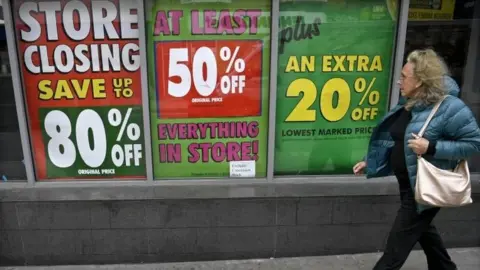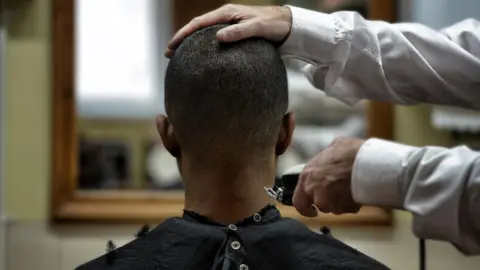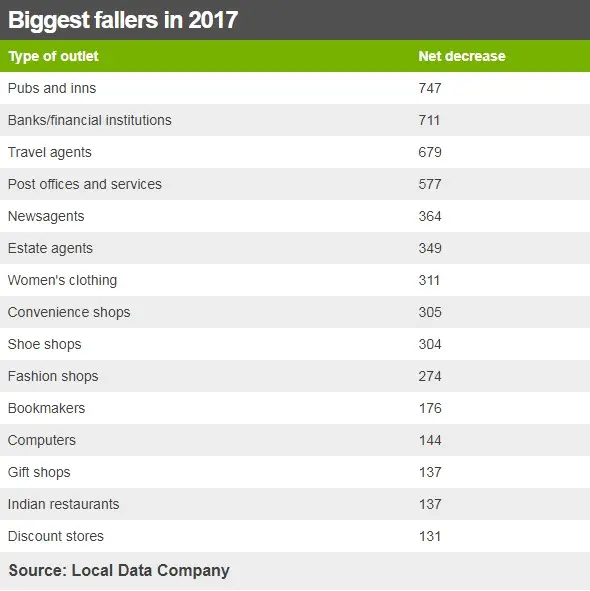Which shops and leisure services are opening and closing?
 EPA
EPAThe budget retailer Poundworld faces an uncertain future after falling into administration. Chains including House of Fraser, Marks and Spencer and Mothercare, have announced they are closing branches. But what kinds of shops and leisure outlets are increasing and declining most across Britain?
If you want to get a haircut or shave, go for a workout, drink a coffee or eat a pizza (either at home or in a restaurant), times are good.
Outlets offering these services are among the fastest-growing consumer premises in Britain, according to a survey by the Local Data Company.
But pubs, banks, travel agents, post offices and newsagents are becoming more of a rarity.
Despite overall sales rising considerably in May, British Retail Consortium chief executive Helen Dickinson has warned that conditions remain "extremely challenging" for shops, with margins tight and competition intense.
So, here are the types of premises - selling goods and/or services - apparently doing best at the moment (the net increase shows how many more premises opened than closed during the year):


The Office for National Statistics says British online sales increased to 17.3% of all retailing in the year to April, from 16.1% the previous year.
So, it's little surprise that businesses providing services and goods that would be hard or impossible to supply over the internet - beauty treatments, tattooing, cups of coffee, and so on - have taken over hundreds of premises.
 Getty Images
Getty ImagesRetailers, on the other hand, face "significant head winds" - including increases in the National Living Wage and rising costs in sourcing goods, with the decline in value of the pound - says Richard Lim, chief executive of the consultancy Retail Economics.
Meanwhile, consumers are looking for "low costs and convenience", leading them to online shopping for many goods, a trend, he says, that will "only accelerate", potentially damaging High Streets.
Here are the retail/service sectors that lost the most premises last year (the net decrease shows how many more closed than opened):


The pubs figure roughly tallies with Campaign for Real Ale data suggesting they are closing at the rate of two a day. It blames high tax rates on alcohol, saying they cause more people to drink at home. But the Office for National Statistics also reports the proportion of the population who drink has shrunk.
And a parliamentary report earlier this year described bank closures as "seemingly remorseless", saying decreased use of cheques and more payments being made electronically had played their part.
Likewise, sales of actual physical newspapers have fallen, as has the number of people smoking, hitting newsagents.
And the Association of British Travel Agents found that 83% of people used websites to book breaks last year - up from 76% in 2016.
Shops and leisure operators are dealing with an "unprecedented" range of challenges, including internet competition, business rate increases and lifestyle changes, says Mr Lim. "The question," he adds, "is how the strongest brands deal with what's happening."



